Last Updated on 10/01/2020 by Chris Gampat
If you’re new to street photography or looking to get started, allow me to introduce you…
You’ve got your camera and you’re eager to get started. After some time considering what kind of photographer you are, and exploring your options, you find yourself curious about street photography. In reality, many photographers end up in this wacky genre because it’s so easy to access: no studio, no lighting (unless you want it) and no dependency on others. You just need a charged camera, some clean SD cards (or rolls of film), and an abundance of creative enthusiasm. Easy, right? Well, not quite…
“99% of street photography, if not more, is about failure.” – Alex Webb.
Let that sink in. You’re about to embark on a creative journey that more often than not is going to leave you feeling like a loser. Sure, it’s easy to step out on to the street and practice street photography. But making a good street photograph is a completely different story.
Scared off yet? If not, great – that’s the first sign that you’re serious about entering this world.
What Is Street Photography?
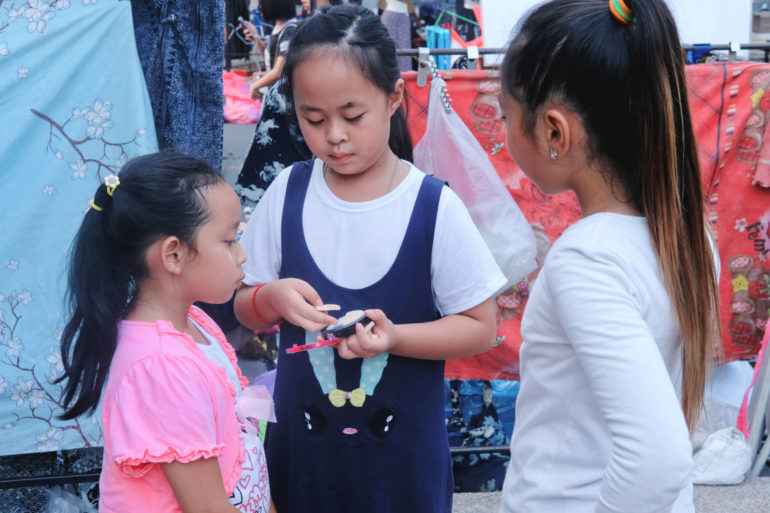
In case you’re curious about street photography but unsure what it is, allow me to explain as best I can. Of course, street photography is photography that is produced out in the public domain. More often than not it’s out on your more traditional streets (pathways, roads, and footfall), but it can also be near the beach or other outside areas. For the most part, true street photography should be candid. That means not staged or predetermined. You should be capturing authentic moments without the knowledge of your subject. Personally, I would classify an impromptu street portrait as street photography, but that’s a debate for a different time.
What Gear Do I Need for Street Photography?
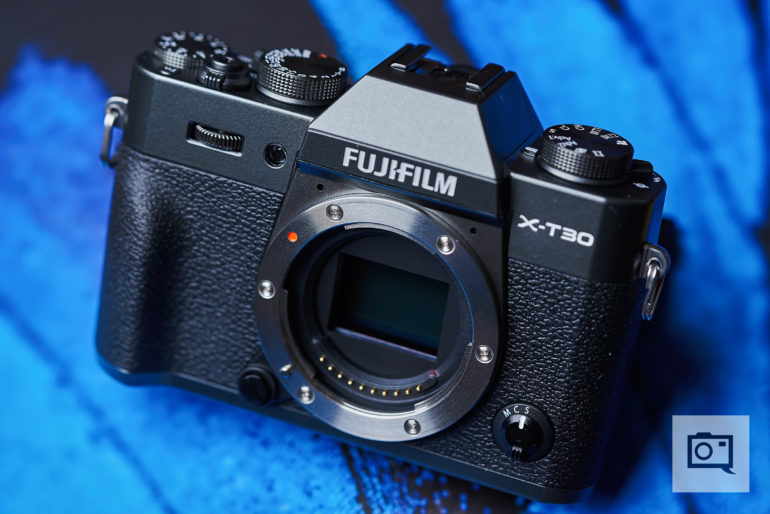
This is the first – and most sensible – question people ask when getting started in street photography. The answer you get will differ depending on with whom you speak. The general consensus is that a nice, small camera is your best option. Firstly, this is because you’re going to be doing lots of walking. Also, a big camera is only going to weigh you down, and you will lose the energy to go out and shoot sooner rather than later.
A small camera is less obvious too. You want to go as unnoticed as possible when out shooting. A chunky camera with a massive telephoto lens is going to make you stand out – which is the last thing you want. Also, a telephoto lens is, for me, cheating on the core principles of the craft. Street photography is about getting up close to your subject. It’s about daring to be uncomfortable for the sake of your street photography. Simply put – shooting with a telephoto lens is a cowardly way out. Ricoh, Fujifilm, and Sony (plus more) make great, lightweight cameras for street photography. Combined with a 23mm, 35mm, or a 50mm you’re well on your way to having the perfect set up.
Read: Our Favorite Gear and Accessories for Street Photography in 2019
What Makes a Good Street Photograph?
Okay, so now the easy part is over, are you ready for the real work? I’m into my seventh year of shooting street photography. Whilst I had success during that time, personally, I did not feel I had an image I was truly proud of until I reached my sixth year. That’s because it’s difficult to make a really good street photograph.
If you have just started, the first step is to just go out and shoot. It’s important to become comfortable in a public environment making photographs of strangers. The easier this becomes for you the more relaxed you will be to start creating better photographs. So once you’re past the stage of snaps shots, you can start applying the techniques listed below.
Triangles: First off, this doesn’t mean actual triangles. What you need to be looking for are subjects and points of interest that are positioned in the same way as a triangle. This offers a nice balance to your photograph and gives the viewer three compelling parts to focus on. See an example below…
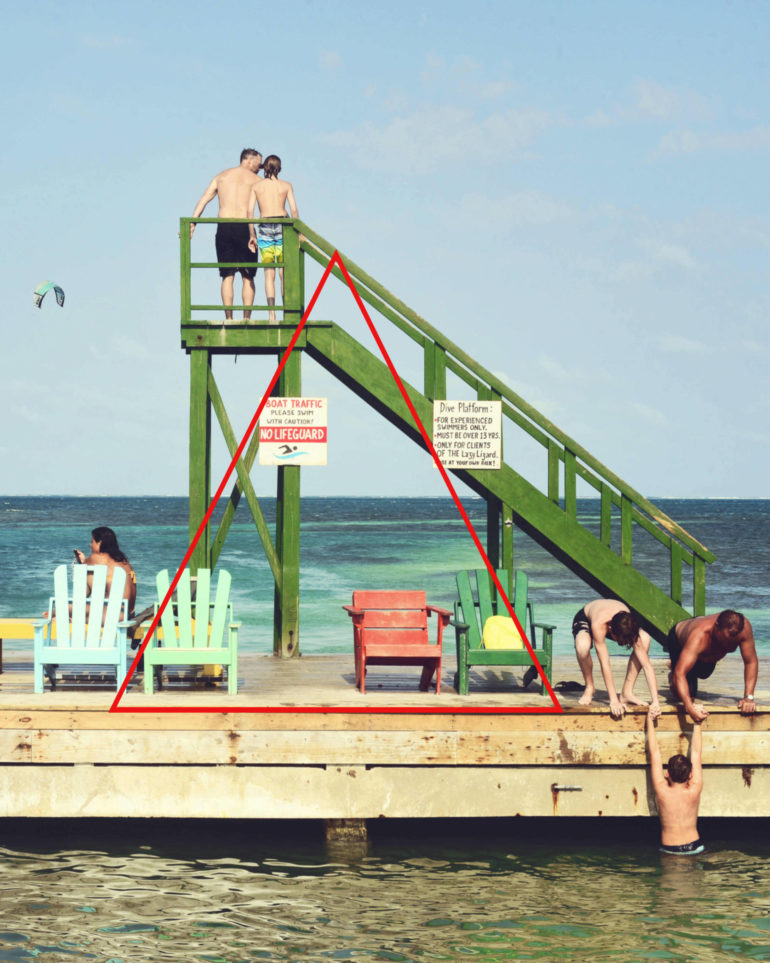
Framing: Having an interesting subject can make for an eye-catching photograph. However, using the framing technique you can really draw your audience to your subject, whilst also adding more depth to your frame. Door frames, windows, and the end of tunnels are all common ways of framing a subject. However, try to think outside the box and go for something less conventional to make your photo stand out from the rest.
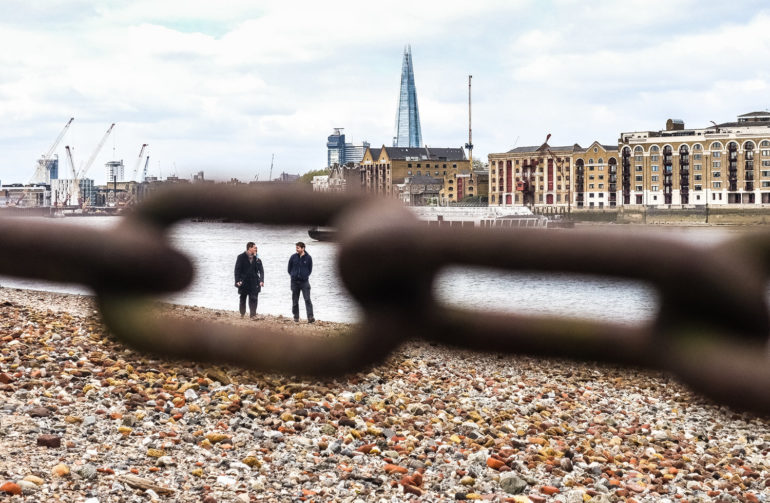
Rule of Odds: The rule of odds is in reference to numbers, not strange people. I’m unsure how this approach first started or why it’s visually pleasing, but it has been so indoctrinated into my approach that I can now only see it as a good thing. So, when finding more than one subject, look for three, five, and so on.
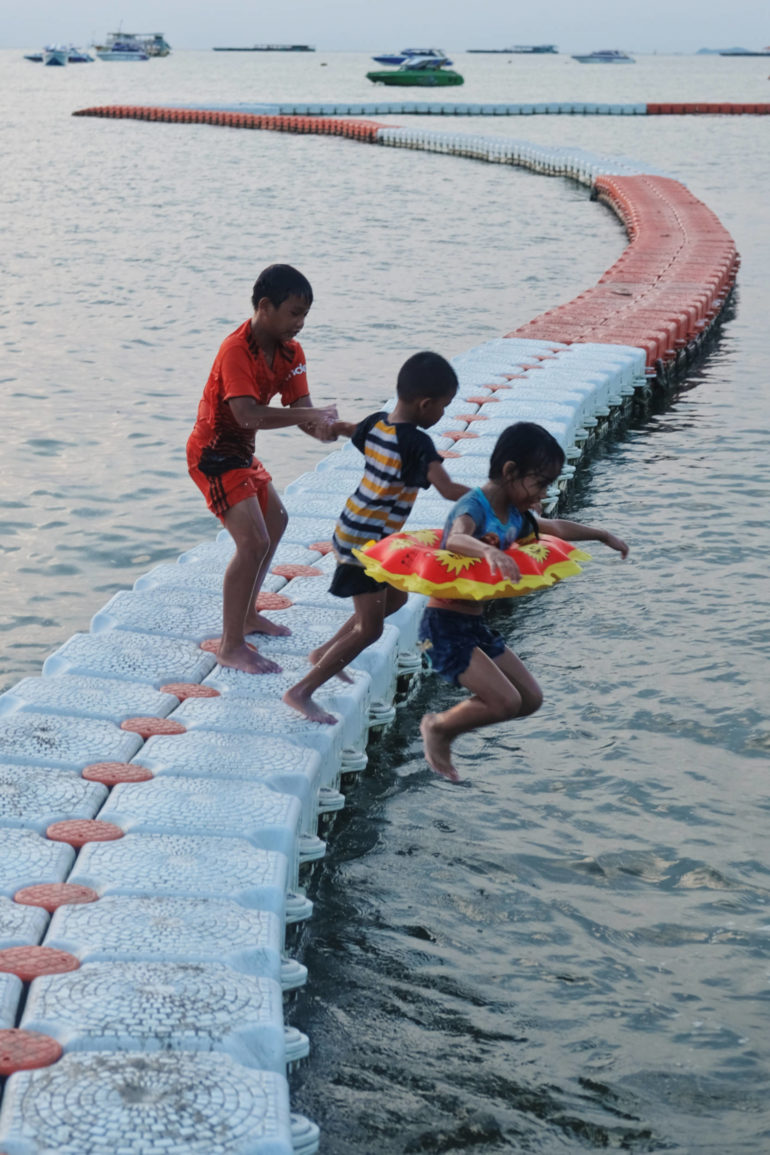
Storytelling: There are plenty of narratives happening on the streets. People in a heated conversation, having a good time, or being silly and playing around. Take the time to connect to these scenes and don’t just take one shot and move on. Spend time with them, take several frames and try to anticipate the moment which gives you the best opportunity to capture the story you want.
In the below street photograph, I observed this mother and child from the other side of the road. I saw two very conflicting emotions: the mother, clearly concerned with keeping her child safe as they were about to cross a busy road (that only moments before the red light had cars whizzing by), and the child, not really interested in safety, but rather having the time of his life walking around a big city and being out in the open. I took some frames from the other side but knew I wasn’t close enough to get anything of great detail. Then as our paths met in the center of the road, I got down low and took the shot. I feel this image best tells the story of the scene I connected with.
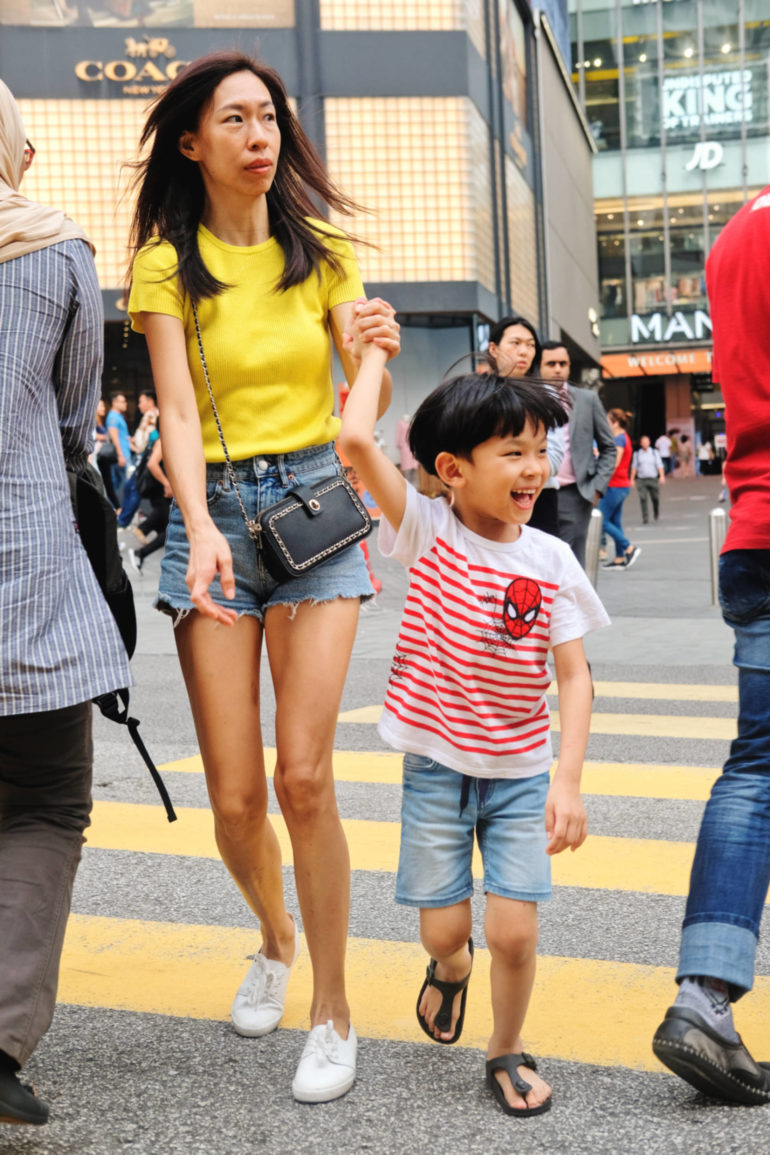
Get up Close: Getting really close to your subjects is a way to make images with more detailed emotion. There’s also the thrill of seeing how close you can get without them being aware you’re photographing them. You must always be respectful. Do not make a person feel like you’re exercising your dominance over them; that’s not cool. You can, however, get yourself only a few feet away without them feeling your presence. My technique is to look beyond them. Make it seem like I’m trying to find a friend or confused about a certain meeting point. By making myself seem I’m in some way vulnerable, it takes the pressure off the people close to me. And then when I’m ready, I take the shot and move on, sometimes even saying, “oh there you are,” as if I’ve located my buddy!
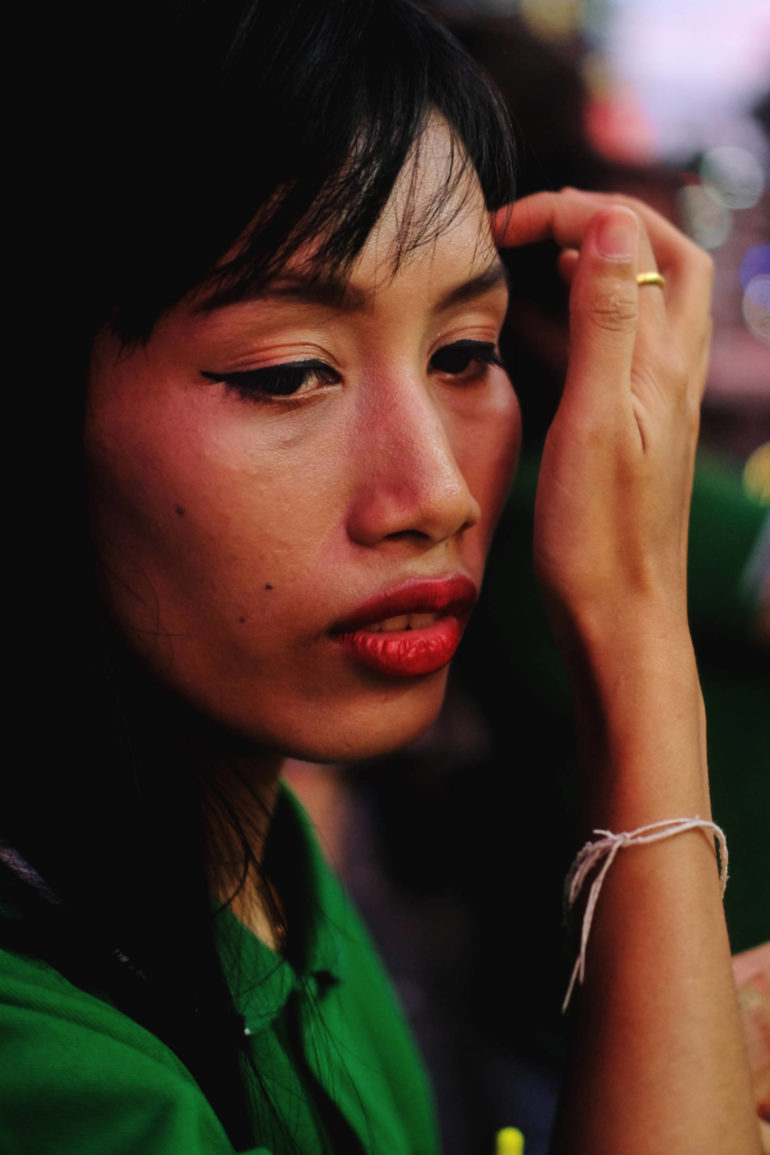
Where to Shoot
There are many famous cities affiliated with street photography; New York, London, Paris, and Tokyo being amongst the most popular. But if you don’t have access to those cities, it does not mean you can’t make street photographs. Really you need to go to places with high footfall. If you live in the sticks you’re going to struggle and your success rate will drop! Aim to go to places where you can find different subcultures, nightlife, and action. Remember, snapshots of people walking in the street are boring. Street photographer Jula Coddington spends a lot of her time shooting by the beach in Australia. She is consistently getting fantastic shots!
Be Free Little One
Now that I have changed your street photography diaper and taught you how to walk and talk, it’s time for you to fly from the Phoblographer nest and go do it on your own two feet. Sure, I will still be here when it all comes crashing down – giving you the tools needed to give it another go. But until then go have some fun and enjoy your new found journey in the world of street photography!
Dan Ginn is an internationally published street photographer. Be sure to visit his website and Instagram.


